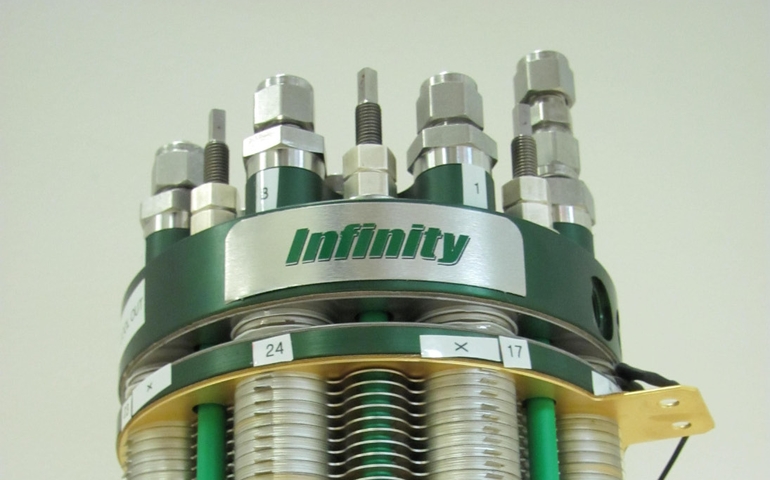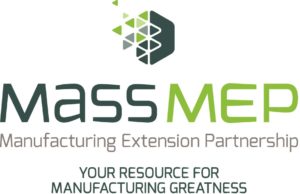Later this year, the New Shepard — the suborbital launch vehicle being developed by Jeff Bezos’ aerospace manufacturer Blue Origin — is hoping to make history as the first commercial flight to reach the internationally-recognized boundary of space, known as the Karman Line.
The 11-minute journey at Mach 3 — more than 2,300 miles per hour with forces three times greater than the earth’s gravitational force — will be fueled by more than just the expected $200,000 per-passenger price tag. It will also feature fuel cell technologies developed by Windsor-based Infinity Fuel & Hydrogen Inc., which has developed a zero-gravity hydrogen fuel cell specially designed for the oxygen-free realities of space travel.
The company is one of only a handful in the world developing air-independent fuel cells, says Infinity’s President and CEO Bill Smith.
“Most of our work historically has been funded by federal government agencies,” Smith said. “They all need [energy].”
And Connecticut companies have played a pivotal role in meeting that need, says Joel Rinebold, the director of energy initiatives at the Connecticut Center for Advanced Technologies (CCAT). In the early 2000s, the state built the Connecticut Hydrogen Fuel Cell Coalition, to create an energy ecosystem of original equipment manufacturers and suppliers.
“Today, Connecticut is recognized globally as an epicenter of hydrogen and fuel cell technology,” Rinebold said, noting the state is home to more than 600 supply chain companies supporting the sector, which draws more than $600 million annually in investment and generates more than $300 million in labor-related income.
Globally, the hydrogen fuel cell market is expected to skyrocket — with compound annual growth of nearly 70% from $651.9 million in 2018 to $42 billion by 2026, according to data from Allied Market Research — driven by a global focus on environmental concerns as evidenced with 200 countries signing on to the Paris Agreement.
Last year, Airbus, an international pioneer in designing and manufacturing aerospace products, announced that it was working to build the world’s first zero-emissions commercial aircraft by 2035 — fueled by a modified gas-turbine engine running on hydrogen, rather than jet fuel through combustion.
Moon to Mars
Smith says the commercial aviation sector provides a strong potential future market opportunity for his company’s innovations, but Infinity is currently largely focused on NASA-related projects.
In fact, in 2019, the company was awarded a $4 million contract as part of NASA’s moon to Mars program, designed to land the first woman on the moon and the next man on the moon by 2024. The program seeks to use innovative technologies to explore more lunar surfaces than ever before, with the goal of using information to eventually send astronauts to Mars.
Infinity’s trademarked hydrogen fuel cell technology — which creates a faster, quieter, more efficient way for fuel cells to create energy — are well-suited to launch vehicles, lander vehicles and surface missions. Infinity’s regenerative fuel cells, Smiths says, can also provide lunar surface power to enable systems to operate during the long two-week lunar night.
His employee base of 25 — comprised mostly of mechanical and electrical engineer technicians and contract administrators — more than doubled in 2020. He anticipates his company could double or triple in size over the next few years as demand for zero-emission, renewal energy grows.
Infinity currently has two locations in Windsor — with a combined 14,000 square feet of space that comprises administrative staff, engineering functions and a testing and production facility, including underwater testing, another oxygen-free environment where Infinity’s fuel cells have found a market.
But beyond outer space and the oceans, Smith said he sees great opportunities here on earth, too, which his company can tap into by adapting its fuel cell designs.
CCAT’s Rinebold agrees. He notes that multiple industries — including the automotive, long-haul trucking and construction — are looking to incorporate hydrogen fuel, not only to reduce their carbon footprint, but also, in some cases, increase safety.
He points, as an example, to the forklift industry.
“That industry is transforming right now,” Rinebold explained. “If [a company] has to run a [forklift] in a warehouse even small emissions can be toxic and damaging to workers’ [health].”
But hydrogen fuel, Rinebold says, creates zero emissions and steady power with no drop off.
What is dropping, both Smith and Rinebold agree, is the cost of renewable energy sources like hydrogen. Markets like Europe and China are investing heavily in hydrogen-based energy solutions and they say adoption rates in the U.S. will increase as energy production costs become a more important determining factor.
That would be a positive step in addressing the global climate change crisis. Hydrogen fuel, it seems, will play a bigger role both here on earth and also for those — like the Blue Origin trip planned for later this year — looking to tour the bounds of space.



